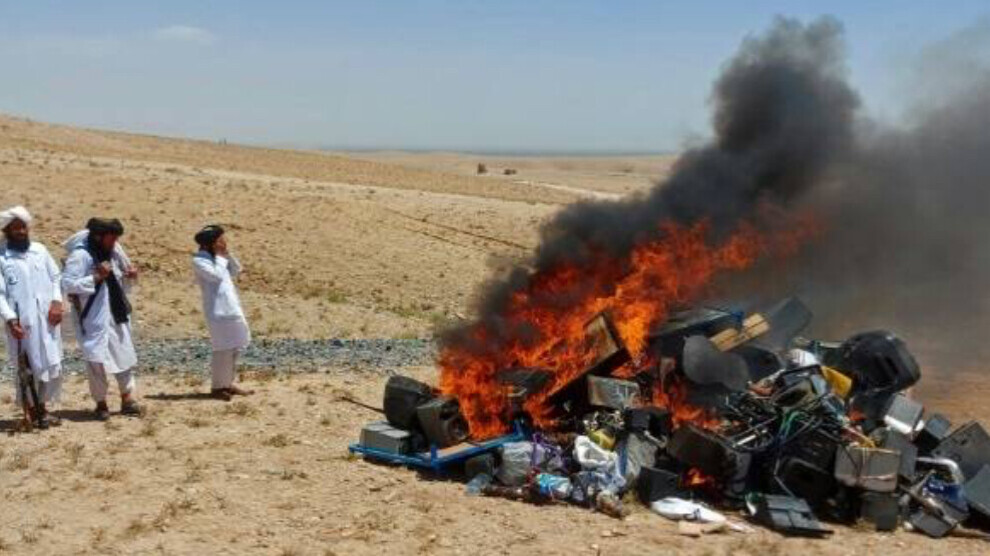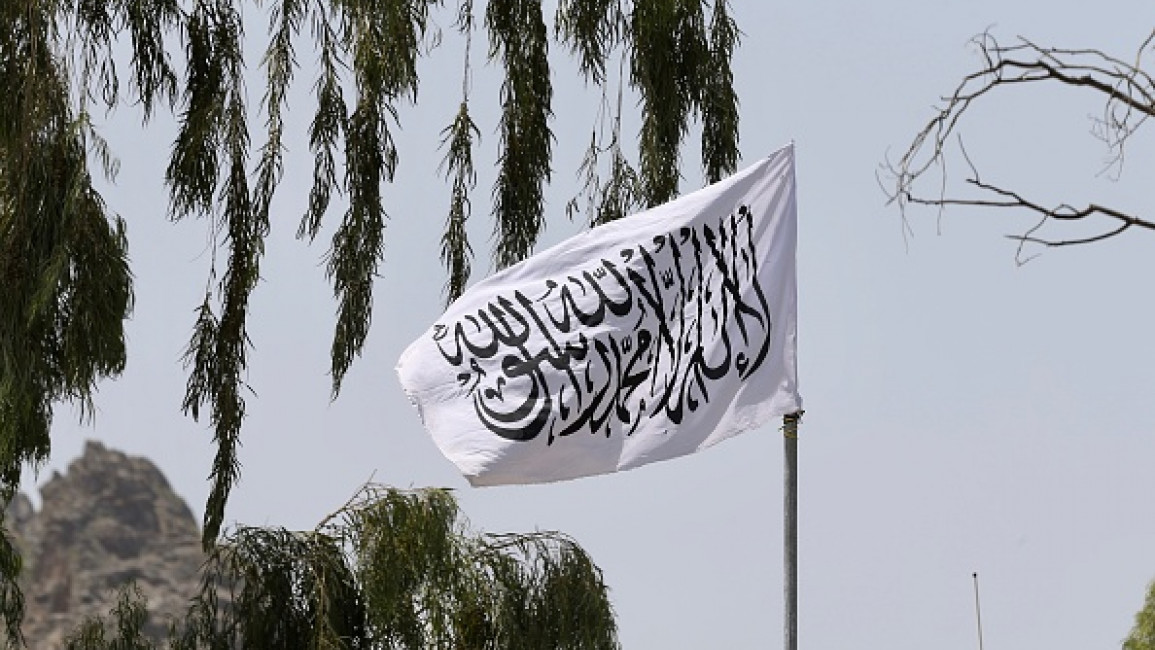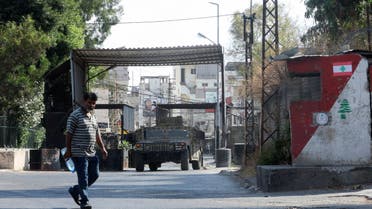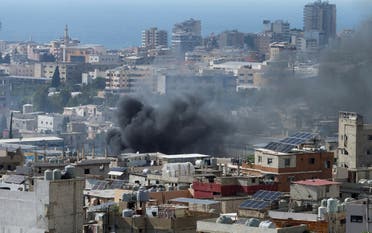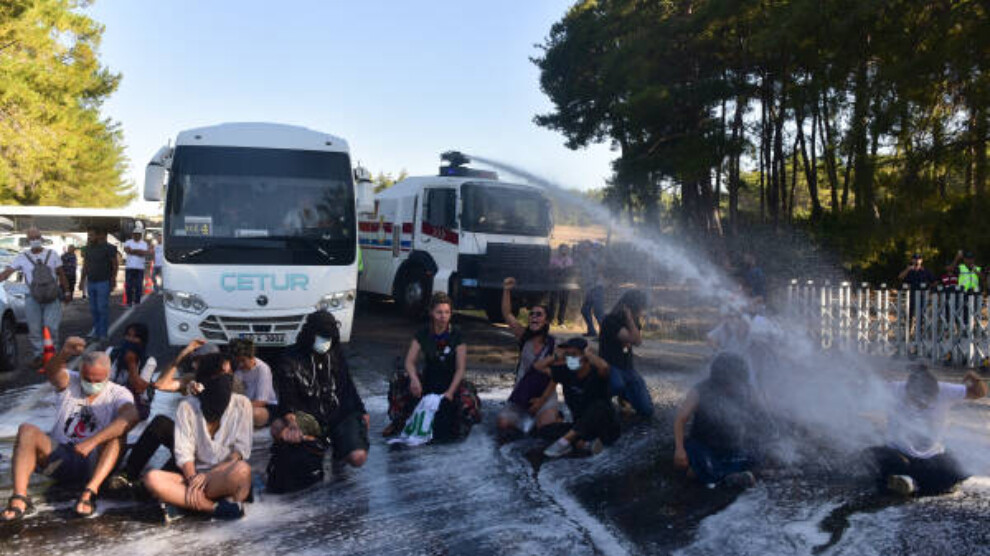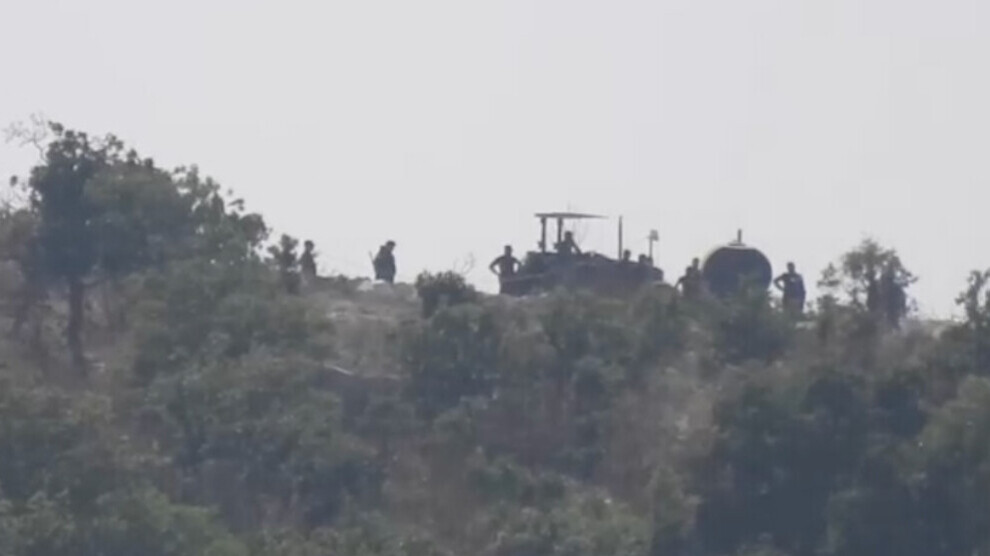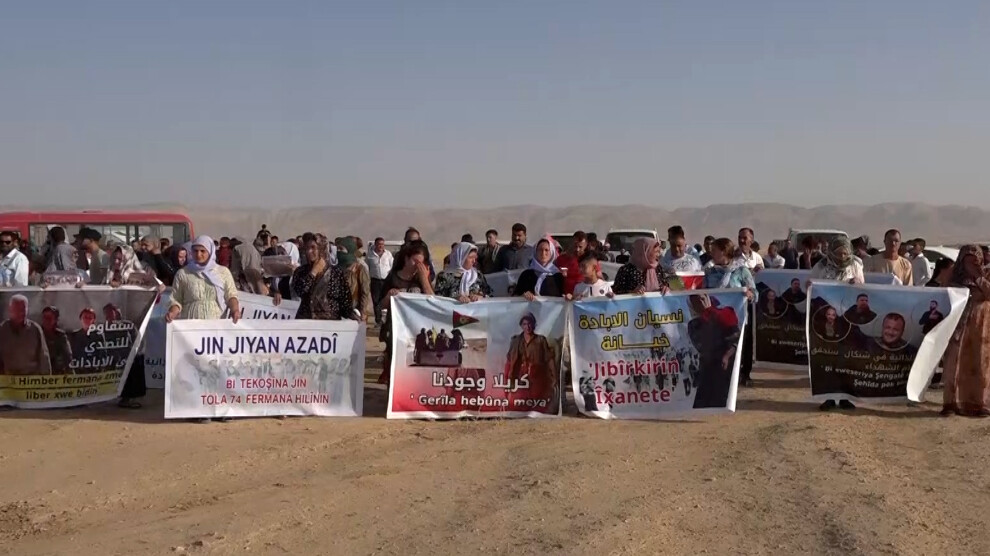Hundreds in need of aid at Indian border after junta airstrike in Myanmar
2023.07.31
 Displaced people from Myanmar are seen in Kampat, Sagaing region near the Indian border as they flee escalating fighting, July 24, 2023.
Displaced people from Myanmar are seen in Kampat, Sagaing region near the Indian border as they flee escalating fighting, July 24, 2023.Some 2,000 villagers displaced by two consecutive days of junta airstrikes on a township in Myanmar’s Sagaing region are in dire need of basic necessities after being refused refuge by authorities across the border in India, according to the villagers and aid workers.
The situation in Khampat, a 2,000-home township located around 8 kilometers (5 miles) southeast of the border with India’s Manipur state, highlights the plight of internally displaced persons in Sagaing.
Fighting between the military and anti-junta forces in the region has forced nearly 800,000 people to flee their homes since the Feb. 1, 2021 coup d’etat, according to the United Nations Office for the Coordination of Humanitarian Affairs.
A man who was among more than 1,000 people from Khampat who fled the July 25-26 airstrikes to nearby Kale township told RFA Burmese that the conditions for displaced there are among the worst he had faced in the nearly 30 months since the coup.
“I’ve faced many difficulties as an internally displaced person,” said the man who has had to flee fighting in the region before and who, like others interviewed for this report, spoke on condition of anonymity citing security concerns.
“There are several sick people and others who had to run [from the fighting] with only the clothes on their backs, who are dealing with extreme difficulties,” he said. “Since we all have to stay together in one shelter, it’s very crowded and inconvenient.”
A person assisting the displaced in Kale said they are sheltering in three or four Christian churches there.
“They number more than 1,000, which is almost the entire population of Khampat,” he said. “They had no choice but to flee here.”
In addition to those in Kale, more than 700 from Khampat’s Kanan and Kamagyi villages have fled across the border into Manipur since July 21, when clashes between military troops and anti-junta People’s Defense Force, or PDF, paramilitaries intensified in the township.
Hundreds ordered home
Myanmar shares a border of more than 1,600 kilometers (1,000 miles) with eastern India. More than 60,000 people have crossed into India’s Manipur and Mizoram states since the coup, according to UNOCHA, but Indian authorities in Manipur have been dealing with violence between the majority Meitei community and the tribal Kuki minority there since early May and say they no longer have the resources to accommodate refugees.
The Manipur state government recently ordered the Indian Border Guard to send the 700 Myanmar nationals – including more than 300 children and 200 women – who have fled since July 21 back across the border. Many of those who have been forced to leave India and others fleeing the fighting in Khampat now have no option other than to shelter in the jungle, with few resources.

Salai Dokhar, the founder of India for Myanmar, an India-based pro-democracy group, told RFA that there are security challenges in seeking refuge for Myanmar nationals, who risk being “driven back” across the border.
“We’ve learned that India doesn’t let Myanmar refugees enter … due to the Manipur conflict,” he said. “Some refugees in Manipur who were found out to be Myanmar nationals were even driven back, too.”
Dokhar said that “more than a few hundred” have been returned to Myanmar since the order was given.
He added that authorities in Manipur have cut off the internet in the conflict area and communication is limited.
“As telephone services have been irregular, we can’t get accurate information every day,” he said.
Tensions high
Meanwhile, a member of the PDF in Khampat told RFA that the military situation there remains “tense.”
“Our People’s Defense Forces have no plans to retreat,” he said. “The [military] doesn't want to lose control of the town either. So it’s a tense situation between the two sides.”
Reports that the ethnic Kachin Independence Army, or KIA, is also involved in the fighting against junta troops in the area could not be immediately confirmed, as the group’s military command is located far away.
“That’s not our active area, which is why I haven’t heard that we have military bases there,” said KIA news and information officer Colonel Naw Bu. “I can’t say that we are involved in the fighting there, nor can I confirm that we are. It’s a little far from us [at] the military headquarters.”
Attempts by RFA to contact the junta’s spokesman for Sagaing region by telephone went unanswered.
Translated by Myo Min Aung. Edited by Joshua Lipes and Matthew Reed.
Myanmar military kills villagers, burns houses in Sagaing region
2023.07.19
 The remains of Mu Mandalay village, where about 80 homes were burned down by junta troops on July 18, 2023
The remains of Mu Mandalay village, where about 80 homes were burned down by junta troops on July 18, 2023Junta troops killed eight civilians and burned down more than 600 homes in Myanmar’s Sagaing region in 11 days of raids, locals told RFA Wednesday.
Residents of Myinmu township said four people were arrested and killed by troops between July 6 and July 17.
“A father and son from Na Be Kyu village, one from Ma Gyi Kan village, and one from Nyaung Myit village, were killed in Ma Gyi Kan village,” said a local, who didn’t want to be named for fear of reprisals.
“The one from Nyaung Myit village is a People’s Defense Force member.”
He identified the PDF member as 20-year-old Aung Zaw Htet.
Locals said troops also captured and shot two people from Nyaung Pin Kan village and two more from Khwet Khwin village.
The army also burned homes in Mu Mandalay, Gon Hnyin Seik and three other villages.
"There are nearly 300 houses in the village. I think there may have been around 100 homes destroyed,” said a Mu Mandalay resident, who also requested anonymity for fear of reprisals.
"The junta column is not far away. So, we had to put out the fire and come back out."
RFA called the junta’s Sagaing region spokesperson, Saw Naing, but nobody answered.
On June 6, junta Deputy Information Minister Major Gen. Zaw Min Tun told RFA that junta troops do not set fire to civilians’ homes, blaming People’s Defense Forces for the arson attacks.
Locals said the raid on Mu Mandalay and nearby villages forced around 2000 residents to flee their homes.
Translated by RFA Burmese. Edited by Mike Firn.


